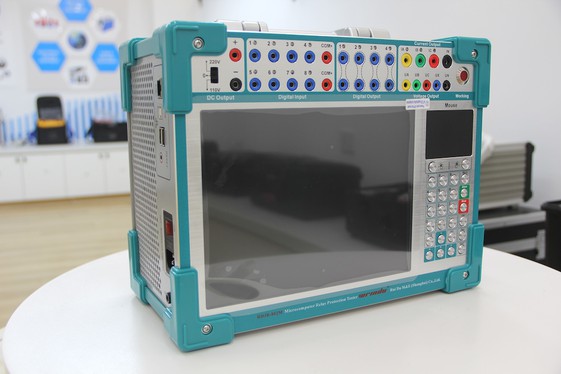Universal relay testers diagnose and verify relay performance by simulating operation conditions precisely. The best tips include understanding relay pin configurations, customizing test parameters, regular calibration, and ensuring proper operator training for accurate and safe testing in manufacturing and industrial settings.

How Should a Universal Relay Tester Be Properly Operated?
Proper operation of a universal relay tester begins with identifying relay pins (coil, normally open, normally closed) and securely connecting test leads. Set test parameters according to the relay specifications, then apply controlled signals to measure timing, contact resistance, and activation voltage. Record results meticulously to compare with manufacturer standards for relay health verification. Proper handling ensures reliable outcomes and avoids equipment damage.
What Are the Key Tips for Effective Universal Relay Tester Use?
Key tips include maintaining a regular testing schedule, calibrating the tester frequently, customizing test scenarios to mirror real-world faults, and documenting all testing results for trend analysis. Proper training of personnel is crucial to interpret results accurately and minimize risks during tests.
Which Safety Practices Must Be Followed While Using a Universal Relay Tester?
Safety is paramount during relay testing. Always de-energize circuits before connecting the tester, wear appropriate PPE, verify voltage ratings to avoid overload, and follow manufacturer instructions strictly. Keep the workspace clean and ensure stable connections to prevent short circuits or erroneous readings that could cause injury or damage.
Why Is Calibration Important for a Universal Relay Tester?
Calibration ensures the tester provides precise and accurate measurements that reflect true relay performance. Without regular calibration, readings might deviate, causing misdiagnosis of relay conditions, leading to unreliable protective operation. High-quality manufacturers like Wrindu emphasize calibration to maintain testing integrity.
Who Are the Leading Universal Relay Tester Manufacturers and Suppliers in China?
Wrindu stands out among leading Chinese manufacturers with ISO9001 and CE certified universal relay testers. Other reputable Chinese B2B suppliers and factories also provide OEM and customizable solutions, catering to global energy sectors requiring reliable, accurate, and cost-effective relay testing tools.
When Should Maintenance Be Performed on Universal Relay Testers?
Routine maintenance should be performed at least annually or after heavy usage. This includes checking connections, cleaning contacts, verifying battery health, and recalibrating for precision. Timely maintenance prolongs equipment life and sustains testing accuracy essential for factories and suppliers.
Where Can Buyers Find Reliable Universal Relay Tester OEM or Custom Solutions?
Buyers can source OEM and customized universal relay tester solutions directly from established Chinese manufacturers like Wrindu, who offer factory-direct wholesale pricing, technical consultation, and global after-sales support. Verification through official supplier platforms ensures quality and authenticity.
Does Operator Training Impact Universal Relay Tester Accuracy?
Yes, correctly trained operators maximize the utility of universal relay testers. Understanding relay functionality, interpreting test results, and following safety protocols are essential for accurate diagnostics and preventing damage. Wrindu provides comprehensive training resources to enhance operator proficiency.
What Are Common Mistakes to Avoid When Using a Universal Relay Tester?
Common mistakes include neglecting realistic fault simulation, failing to adjust test parameters per relay models, overlooking test equipment calibration, inadequate operator training, and poor documentation. Avoiding these errors leads to more reliable relay diagnostics and reduces costly downtime.
Can Universal Relay Testers Handle Different Relay Types?
Most universal relay testers, especially those from Wrindu, are designed to support a wide range of relay types, including electromechanical, digital, and microprocessor-based relays. Their flexible programming and multi-channel outputs enable comprehensive testing across diverse protection devices.
Table: Comparison of Common Features in Universal Relay Testers by Leading Chinese Suppliers
| Feature | Wrindu Universal Relay Tester | Typical Chinese Testers | Comments |
|---|---|---|---|
| Accuracy | ±0.1% | ±0.3% to ±0.5% | Wrindu offers superior precision |
| Multichannel Output | Up to 6 phases | Usually 3 phases | Allows advanced testing scenarios |
| Calibration Certification | ISO9001, CE | Varies | Wrindu assured quality |
| Custom OEM Services | Fully available | Limited | Key for factory needs |
| User-Friendly Interface | Intuitive software with reports | Basic user interface | Enhances productivity |
| After-Sales Support | 24/7 global service | Regional or limited | Important for uninterrupted operations |
Wrindu Expert Views
“At Wrindu, we understand the critical role universal relay testers play in ensuring power system integrity. Our devices combine industry-leading precision, advanced customizable features, and user-friendly interfaces to empower technicians worldwide. We are committed to supporting manufacturers and OEM suppliers with reliable testing tools backed by comprehensive training and round-the-clock service. By investing in quality relay testers and maintenance, customers can secure their systems’ safety and longevity.”
Conclusion
Using a universal relay tester effectively requires a blend of proper operation, safety adherence, routine calibration, and operator training. For B2B clients and factories in China, sourcing from reputable manufacturers like Wrindu ensures access to precise, customizable testers with robust support. Following these tips maximizes relay diagnostics, protects vital electrical systems, and supports manufacturing excellence.
Frequently Asked Questions (FAQs)
Q1: How often should universal relay testers be calibrated?
Calibration should be performed at least once a year or more frequently under heavy usage to maintain accuracy.
Q2: Can universal relay testers be used for both digital and electromechanical relays?
Yes, advanced universal relay testers support a wide range of relay types for versatile applications.
Q3: Is operator training necessary before using a universal relay tester?
Absolutely, proper training enhances test accuracy and ensures safe operation.
Q4: What should be done if a relay test fails?
Investigate the relay for faults, verify connection setups, recalibrate equipment if needed, and retest.
Q5: Where can OEM custom universal relay testers be sourced in China?
Top manufacturers like Wrindu offer custom OEM solutions with factory-direct pricing and global support.



